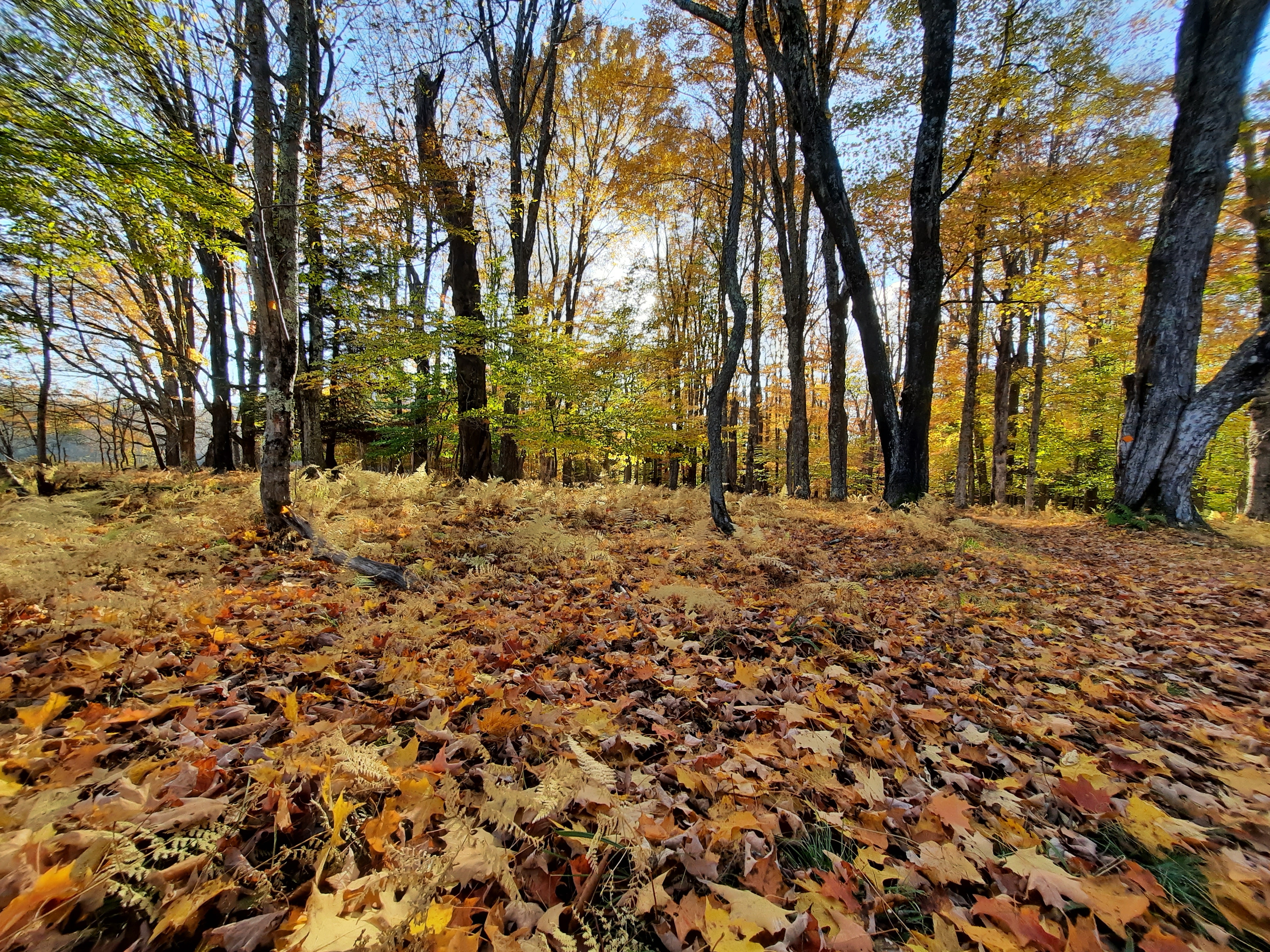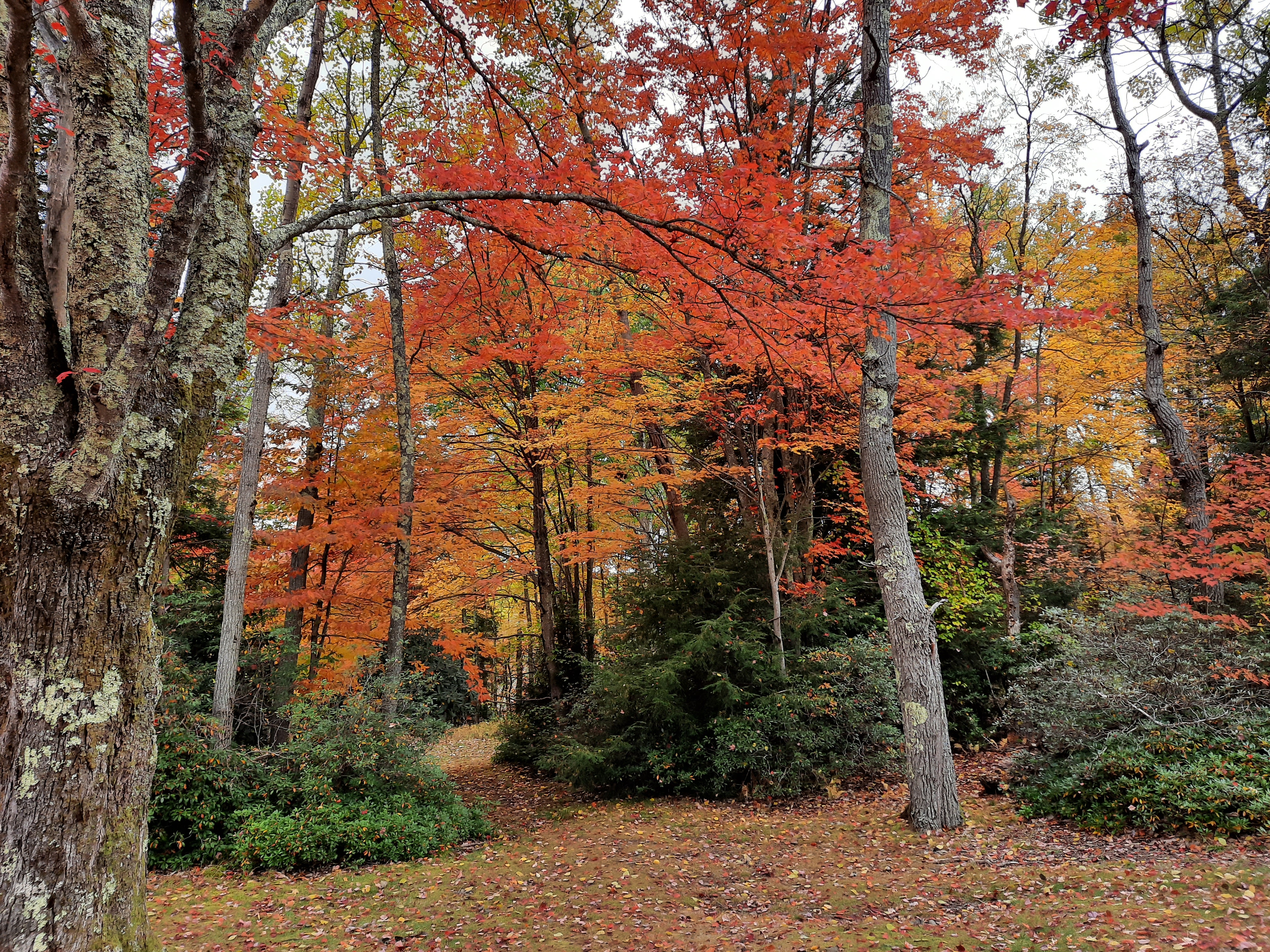Rodgers and Hammerstein notwithstanding, I’ve always known the hills are alive.
At 14, my family moved from the sandy pines of South Georgia to a high Appalachian town in North Carolina. Our house there, nearly 4,000 feet above sea level, did not have air conditioning. We only missed it a few days each summer. Something in my internal thermostat must have permanently re-set in the years I spent there, leaving me pining for the mountains whenever summer begins to creep into the Tennessee Valley, where I’ve lived since college.
Once the temperature hits the mid-nineties, I often give up and flee to the hills. Seeking refuge in the lush shade of temperate rainforest or ridgeline breezes is a family tradition, though I suppose it hasn’t helped me re-acclimate to the rest of the South. Blessedly, I still live close enough that a 2-hour drive and quick mile hike can take me to another world.
Learning to Look Up
Old-growth cove forests seem designed to lead to self-forgetfulness. I know I can always find rest there leaning on the shoulder of a tulip poplar, rocketing to heaven from a vast fan of creekside roots. Six, maybe eight, feet thick, one hundred seventy-five feet tall, it has carried the weight of the world for five or six hundred years. The propped frame of a passing hiker is no added burden.
The Cherokee called these woods “Nantahala”—roughly translated as “the place of the noonday sun”—because the high valley slopes only let light reach the forest floor for a brief while in the middle of each day. With the thick summer canopy in full flush, it’s not all that bright even then. The understory is not thick, owing to the dark shade, with small shrubs and groundcover gobbling up what light they can, leaving much of the ground open for mushrooms, millipedes, and microbes to slowly work through rotting branches and centuries of leaf-litter.
Though the Cherokees’ original name persists for the National Forest encompassing this area, the U.S. Forest Service selected a particular cove to rename as a memorial to poet Joyce Kilmer, best remembered for an untimely demise in World War I and one particularly sentimental poem (“Trees”) that ends with the line, “only God can make a tree.”
Such divine provenance certainly hasn’t stopped people from trying to make trees. Looking up a bare trunk that punctures through all competing foliage before its first leaf, it is not hard to see cathedral columns of Gothic imagination. Perhaps stone temples bathed in stained-glass light were attempts to recapture the world as it was before it was “seared with trade; bleared, smeared with toil,” as another poet—Gerard Manley Hopkins—phrased it in “God’s Grandeur.”

Death and Rebirth
Not many such vaulted glades remain today even under the putatively watchful eye of the USFS. It protects a few wilderness spots like this while managing millions of acres for timber contracts. What becomes of a sacred space when the pillars come down?
At Joyce Kilmer, across the creek from the main grove of outsized poplars, there are scars. A swath of the cove was devastated by the one-two punch of a tornado during the 2011 Southeast “Super-outbreak” and a forest fire during the exceptional drought of 2016. What grows on that slope today bears little resemblance to pre-storm flora. A tangled mass of hydrangea, mountain laurel, loosestrife, blackberry canes, and saplings of maple, birch, hemlock and even the next generation of tulip poplars have rushed into the breach—all interspersed with a handful of older trees that survived the upheaval.
In spite of the temporary overabundance of sunlight and the changes in soil moisture it brings about, this is a forest in recovery. In 2-3 more decades, it will look more like a typical, healthy cove forest again, shading the creek again and allowing the ground and micro-biome to bounce back. Barring other catastrophes, in another 40 or 50 decades, it will be as majestic as its antique neighbors further up the cove are now.
Destruction and Restoration
Just below the summit of Huckleberry Knob—a 5,560’ peak barely 5 miles west of this poplar grove—another story is told in a clutch of 14 Fraser firs. These evergreens (of Christmas tree industry fame), only grow in the wild atop the highest reaches of the Southern Appalachians. What makes this tiny forest stand out is its isolation, a sort of reverse-clearing within acres of grassland.
Huckleberry Knob is one of the fabled “balds” that draw hikers from all over the country for their sweet-smelling wildflower meadows and 360-degree views. Originally, it’s likely that the whole summit was forested with firs and red spruce, like many neighboring peaks to the north and east, but only this patch remains. Why balds exist at all, no one really knows. Most speculate that they were created either by timbering or lightning-sparked wildfires, but ended up being maintained “artificially”—maintained by the Cherokee as sacred sites or berry harvesting centers, later used for summer grazing land by European settlers weary of valley heat.

Today, most are protected by overlapping state, federal, or private land-management entities. Some balds are in various stages of reverting back to forest, the laws of old-field succession operating as predicted. Others are kept in grass by mowing or grazing by lightly-managed herds of semi-wild ponies. Others seem to persist by new natural forces, a shift in soil chemistry and species balance running deep enough to effect a permanent alteration.
In any case, each of these mountaintops is wholly different from its original landscape. Instead of dark, evergreen woods shading out all underbrush, there are prairies of abundance—where strawberries, blueberries, and blackberries invite human and animal foragers to partake. A ring scrub—a sort of high-altitude savanna—often buffers the fields from more dense woods typical of a region receiving 80-100 inches of rainfall each year.
A few hundred miles to the northeast, the balds atop the Allegheny Plateau of West Virginia are referred to as “sods” in the local vernacular. Many of these have better attested origins, the largest a direct result of massive fires following clear-cut logging in the 19th century. Intense heat fueled by heaps of stumps and branches scoured humus down to bedrock. Amid the bare stones, grasses and lowbush blueberries stake a claim, with a few krummholz spruce in damp spots that retain some soil. In October, as the blueberries’ leaves flush crimson, thousands of acres of open space appear to burn again. To me, there is hardly a more lovely sight on earth, literally beauty from ashes.

Spacious Delight
All these places—pristine, healing, or permanently altered—speak of resurrection. Their message is not the twinkling-of-an-eye fix of all the sad things that ever took place, but the slow, almost imperceptible mustard seed growth of new life in the shadow of the old. It doesn’t make itself known right away. But it is there, hidden, waiting to outlast the destruction with unimaginable flourish.
Later in his poem, Hopkins concludes, “for all this, nature is never spent; there lives the dearest freshness deep down things.” The woods never give up. The truth and goodness of creation speak plainest in their beauty. The Holy Spirit, brooding over the bent world, imparts wisdom by the wonder of what God has made.
Perhaps wonder feels like wisdom because it is a gift from the one who brings us out into spacious places because he delights in us (Ps. 18:19). There is a sense in which God has chosen to communicate both His power and the favor in which we walk as His beloved children though creation. All God’s works speak. Even without words, “ their voice goes out into all the earth” (Ps. 19:3-4). As we consider our own creatureliness, the rest of creation shows us a God who is not embarrassed by our frailty but has ordered a world to sustain and fill us, even walking amid his hills and trees together with us for a time.
The grandeur of Creation, in large and small incarnations, lifts our heads, telling us that all that crushes and wearies us is yet part of a different, better story. Beauty represents God’s attunement to us, confirming the reality of truth and goodness when so many facts on the ground call them into question. It wraps the Lord’s love and glory and wrath and power into a form that cannot be apprehended, but only received.
When I go to the mountains, I remember.
Under the loud silence of a canopy of birds, in the steamy green darkness of an Appalachian cove, with silver-spotted skippers licking sweat from my forehead, I feel fully present in His world. My heart and mind are pulled back into curiosity and hope. I am held fast in my limits, sustained in abundance, and called to worship.
Featured Image: Poplar in Joyce Kilmer Memorial Forest, June 2022.

















